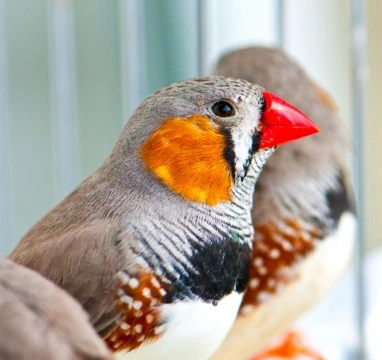
What’s a softbill ?
Many people use the term ‘softbill’ to refer to a number of birds who have large or rather ‘succulent’ looking beaks. These can include toucans, turacos and hornbills. In reality however, the name ‘softbill’ is actually used to describe the diet of certain types of bird. This correct way of using the term softbill, is to describe the soft food diet they prefer. These types of bird fall into six broad categories.
- Carnivorous – birds which feed on small mammals, insects and other vertebrates. These include Kingfishers and Rollers
- Insectivorous – birds which feed on insects and invertebrates such as bee-eaters and fly-catchers
- Omnivorous – those types of birds which feed on plant and animal matter such as corvids and Hornbills
- Frugivorous – birds that feed on fruit, such as Turacos and Fruit Doves
- Nectarivorous – birds which feed on the nectar of flowers. Types include Hummingbirds and Sunbirds
- Folivorous – those birds that feed on plants, petals and leaves such as Turacos and Mousebills
It must be remembered that these categories are not exhaustive and any descriptions are subjective. This means there are many types that are not included in the descriptions that some people may consider softbills.
Housing softbills
It’s essential that anyone considering keeping softbills has some experience keeping birds as these are definitely not a starter pet. Although many softbills are generally low value birds – finches for instance, their care is specialist and will require some investment both financial and in terms of time.
The aviary needs to be large and very well planted to give these birds enough room to stretch their wings and choose their favourite perch, and the size of aviary required means that many people simply don’t have enough room outdoors to accommodate such an enclosure. Many birds have suffered because their owners have failed to provide adequate space.
Additional birds will need more space and as softbills can be aggressive it’s wise to think about how you will provide housing should you decide to expand your collection.
For one breeding a pair a size of 3m x 2m x 2.1m is recommended and any chicks will have to be moved to another aviary when they achieve independence. Therefore, if you think you might like to breed softbills, multiple aviaries will be required.
Feeding your softbill
A softbill has evolved to thrive on a very specialist diet and also has activity levels that are difficult to replicate in an aviary environment. They aren’t as domesticated or easy to tame as other types of captive birds and it’s therefore essential that they are provided with everything they need to make them as biddable as possible. That said, they are intelligent birds and will become tame in time. Hand feeding will help with this. It’s also wise to make sure that they are offered a varied diet.
If there is more than one pair in the aviary, food should be placed in multiple locations to allow less dominant birds access to feeds. This would also help young birds whose parents may be protective of the food supply. If there are a number of softbill types in the aviary a number of feeding stations will need to be established to cater for their different diets.
Softbills have large appetites and will need feeding at least once per day, perhaps twice a day in summer and more if there are young birds in the aviary. They respond well to a structured routine and will be calmer if they know when they are going to be fed, cleaned out and watered.
If you are feeding insectivorous birds it’s worth trying to encourage natural hunting and foraging behaviour by presenting the insects in a way that forces the birds to scratch around for their food. A large deep tray filled with leaf litter will keep any insects entertained while the birds do their best to find them. By offering insects in this way, your birds will be exercised and stimulated mentally. A responsible and proactive keeper will quickly become accustomed to feeding live insects and may even learn how to breed them themselves.
When choosing your birds speak to the breeders about what they require in terms of food and housing. There are many pre-prepared and commercial diets available and your chosen birds may have been raised on one of these. It must be fed this until it can be gradually weaned off it onto its adult diet. Although many owners prefer a fresh diet, commercially available pre-mixed foods are popular and can provide excellent levels of nutrition.
Breeding
Many keepers believe they have a moral duty to breed their softbills, mainly because as more people take these birds as pets, the wild populations decrease; so unless you are planning on keeping single sex groups for their looks, then breeding is something you may want to think about.
A pair of softbills that are housed correctly and offered plenty of appropriate nourishment will do what comes naturally and eggs will result. In fact, mating is so likely to happen it often signals a problem if it does not! If you do get a clutch of eggs, remember to keep a close eye on things and remove the young birds when they become independent. They will then need a home of their own and they can either be sold or kept in a separate aviary.
If you do want to breed your birds and you feel you need a little more advice it may be wise to speak to other breeders and invest in a good book.



